A resume for a hair stylist needs to show not only your experience but also your expertise. To do that, it needs to be targeted and focused on the job you are applying for. The best way to do that is by including keywords from the job posting in your resume and other skills and experiences that directly relate to the position. You must demonstrate why you are the right person for this job in as few words as possible. That means cutting out any unimportant information. Your resume should be no more than two pages at most. If yours is longer than that, you need to edit it before submitting it. Let’s look at how you can create the perfect resume for a hairstylist so that when an employer sees it, they know you’re their man or woman.
Hair Stylist Resume Example
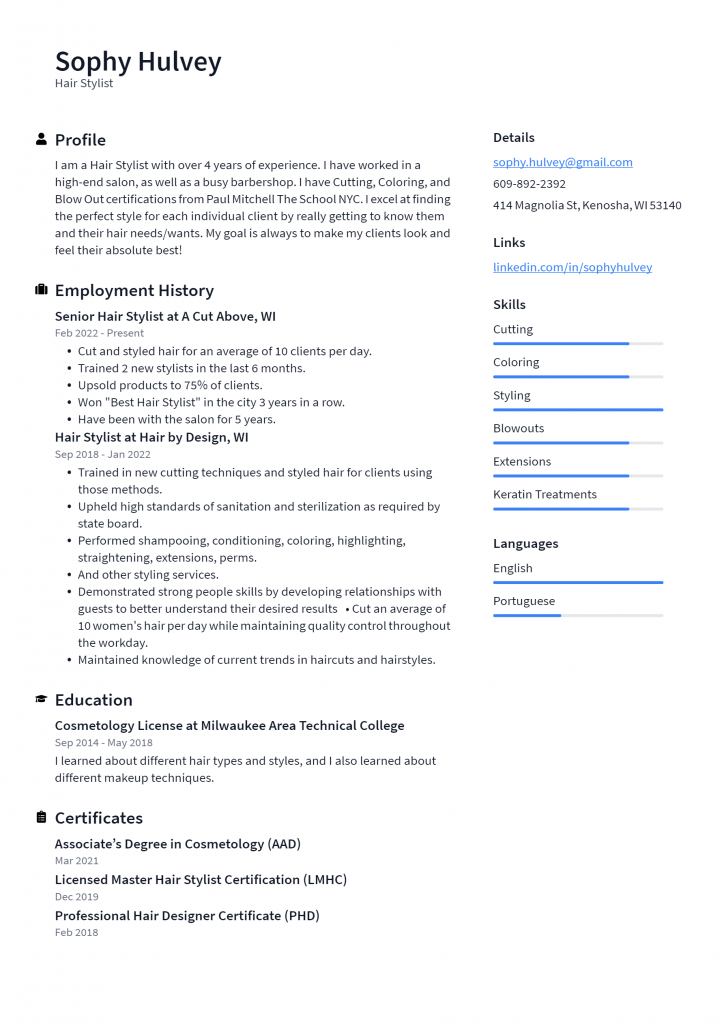
Download This Hair Stylist Resume as PDF
Cosmetologist Resume Example
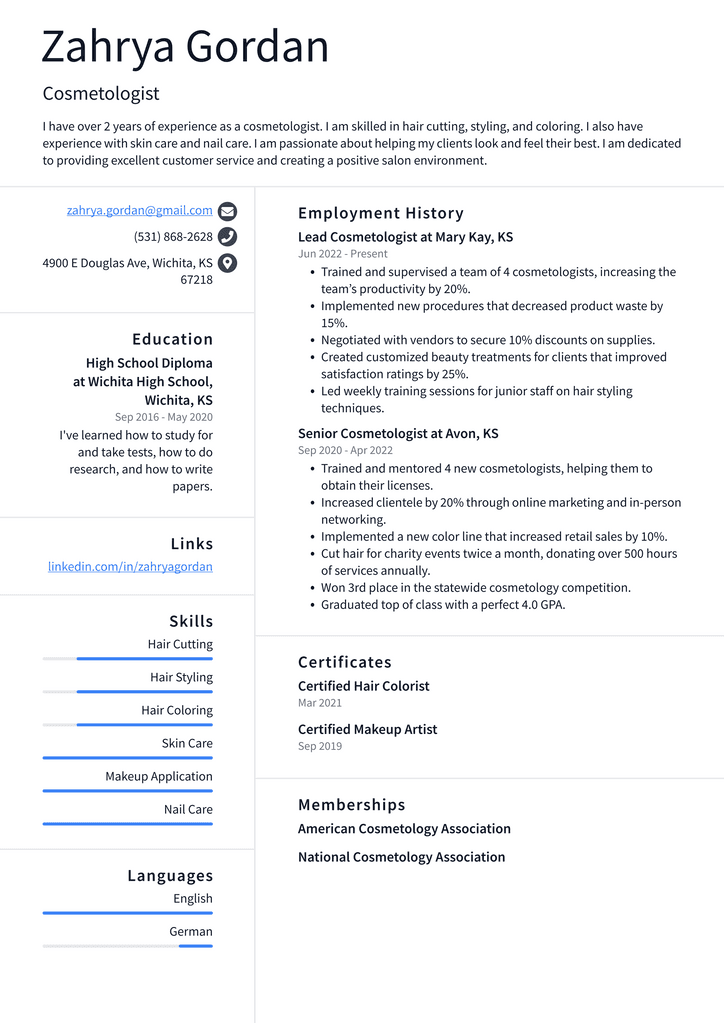
Download This Cosmetologist Resume as PDF
Hairdresser Resume Example
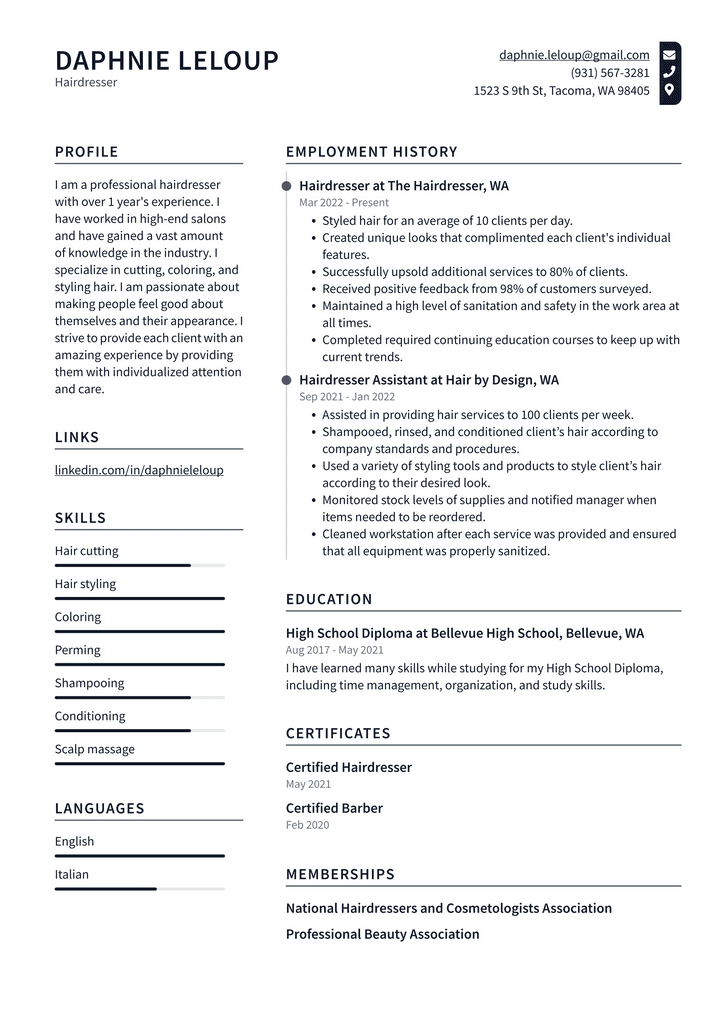
Download This Hairdresser Resume as PDF
Barber Resume Example
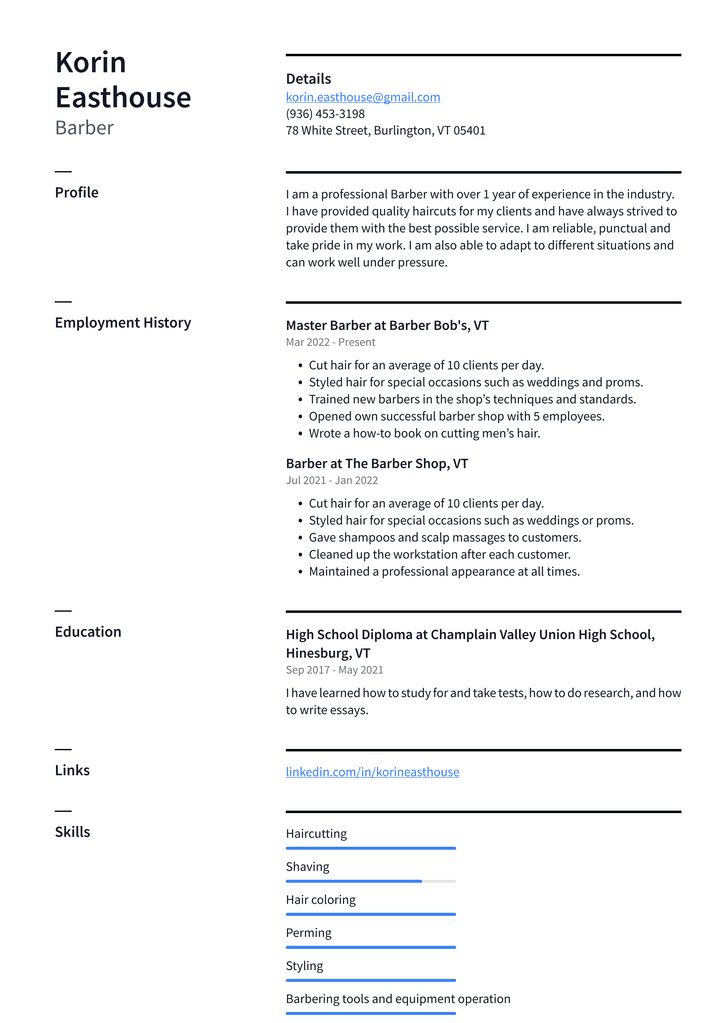
Download This Barber Resume as PDF
Salon Manager Resume Example
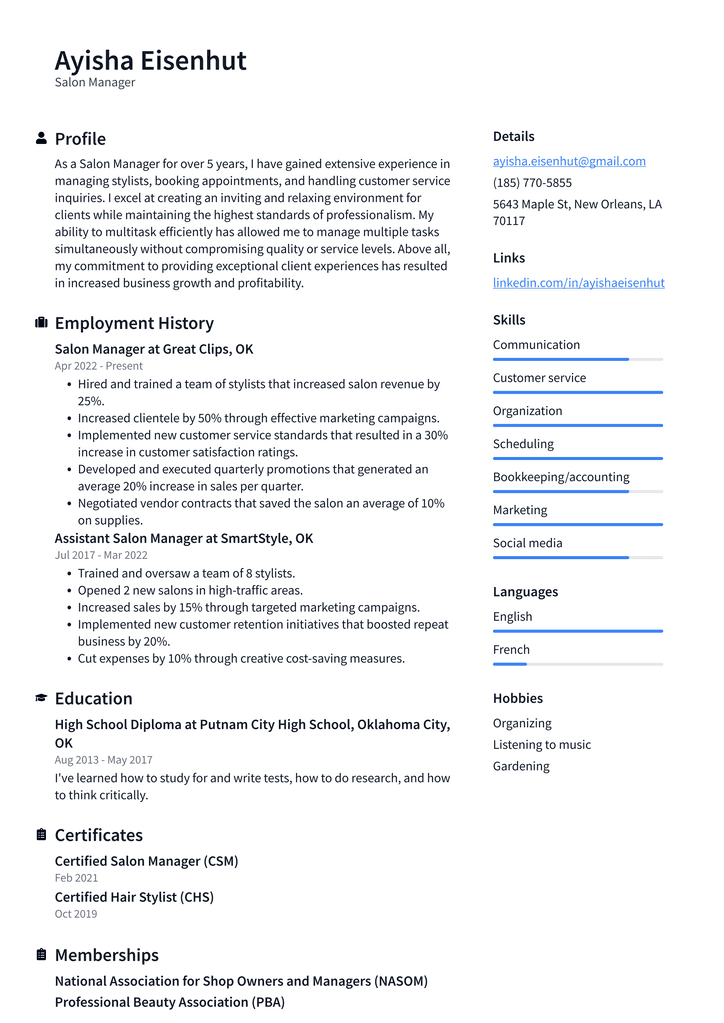
Download This Salon Manager Resume as PDF
Salon Owner Resume Example
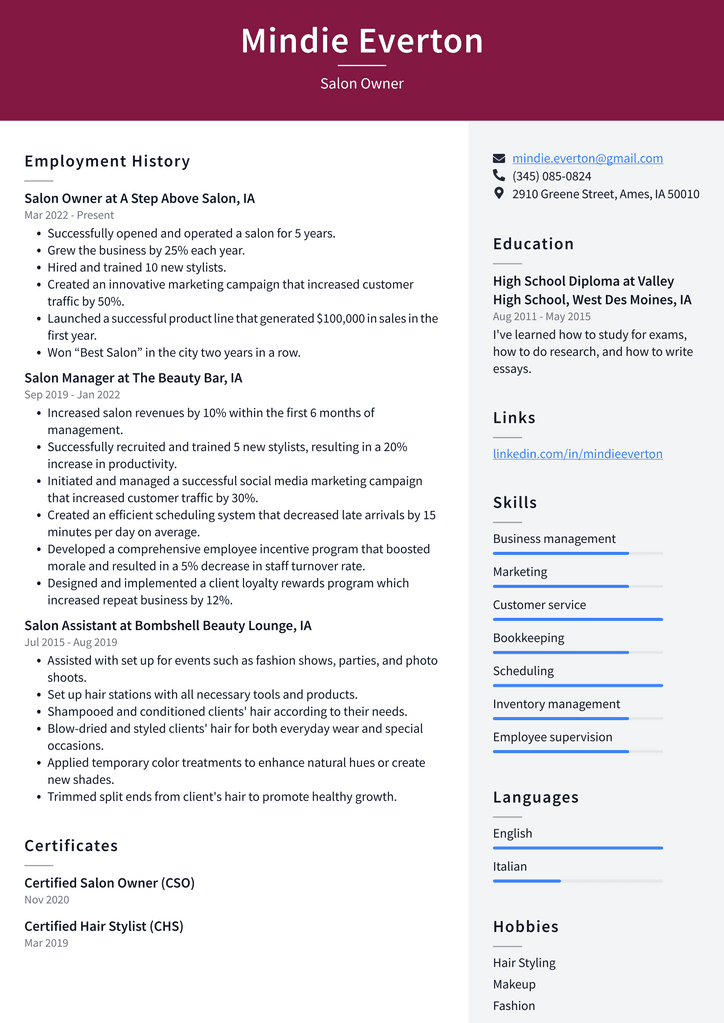
Download This Salon Owner Resume as PDF
Hair Colorist Resume Example
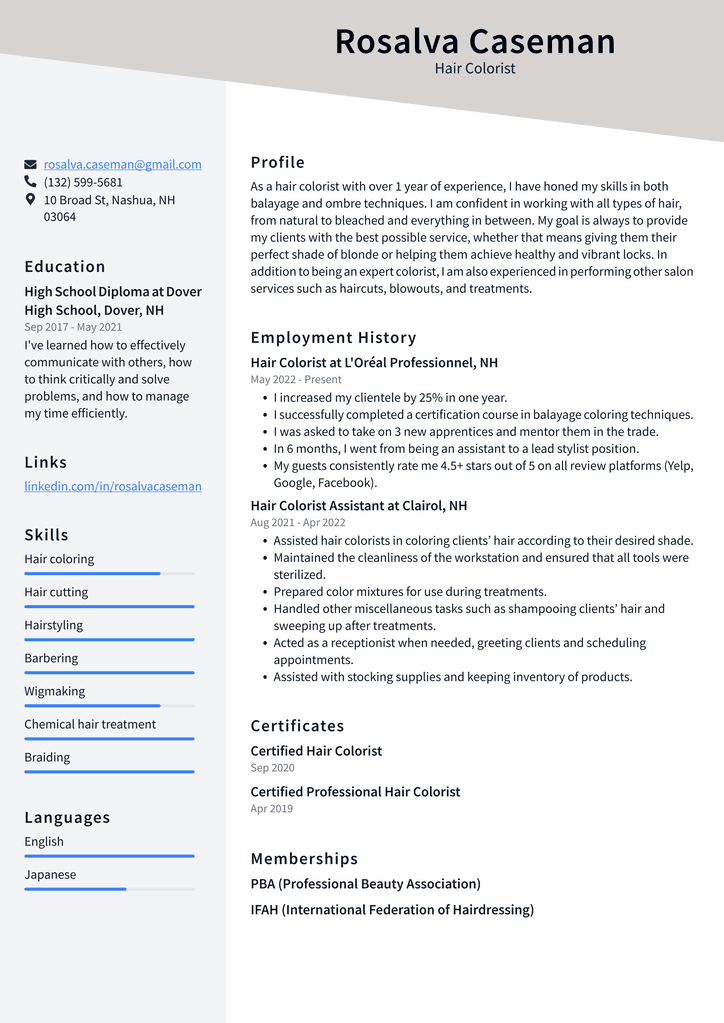
Download This Hair Colorist Resume as PDF
What to Include in Your Hair Stylist Resume
Your resume should include the following information: – Your name and contact information: The top of your resume should include your name, email address, and mailing address. – The hiring company and job title you are applying for: Include the name of the company you are applying to and the job title you hope to get. Ideally, you would have a crystal clear idea of the position you want and be able to target your resume accordingly. – Dates of employment and job titles: Include the dates you worked at each job and the job title. This will show the length of time you have been in your field and demonstrate your experience. – Education: Education is an important section of your hair stylist resume. If you went to school for cosmetology, be sure to list the degree you received. This will show that you are qualified for the job. If you received a degree in another field, show how it applies to this one. – Additional skills and achievements: In this section, be sure to include anything you have done that is relevant to the job. For example, if you have won any awards related to hair styling or have participated in any competitions, you’d want to include those on your resume.
Summary of Qualifications
A summary of qualifications is a brief (one to two sentences) description of your skills and talents as they relate to the job. It is usually placed above your work experience section, but you can also put it below your education section. A summary of qualifications can help you show that you are overqualified for the job or give you an edge over other applicants. You can write it in the first or third person, but make sure to focus on your key strengths.
Education
This section of your resume should be listed in reverse chronological order. The most recent school you attended should be listed first, and the oldest school should be listed last. In addition, you should include the name of the school and the city you attended, your degree, any major or minors you have, the year you graduated, and any honors or awards you received while in school. It’s also good to indicate if you received any course credit for work experience.
Professional Experience
This section should be listed in chronological order, starting with your most recent job and ending with your first job. There are a couple of ways to format this section: – Chronological: This is the most commonly used format. In this format, you list jobs in the order they occurred, with the most recent position listed first. Once you get to your current job, you start a new row and list your current job first. – Functional: In this format, you list your work experience based on your skills. This can be helpful if you have gaps in your employment history or are making a career change. In this format, you want to highlight your skills and how you used them in each job. There are a few things to keep in mind when writing this section. First, make sure to list each job in full. That means you want to include the company name, the location, the dates you worked there, the title, and a short description of what you did. Next, you want to use action-oriented verbs that explain what you did in each position. Avoid using words like managed and supervised; instead, use words that describe what you did, like planned, organized, and ran. Finally, you want to keep this section short and to the point. Two or three employment details are enough for this section.
Skills Section
If you’re making a career change, don’t have a lot of experience in your field, or are trying to get into a new industry, you may be worried that you don’t have enough experience to get the job. You can use a skills section to demonstrate your qualifications for the position. In this section, list the skills you have that are relevant to the job. Put each skill in a sentence and use action words like managed, prepared, and supervised. You should have a minimum of three skills in this section, but more is better.
Recommendations
If you have someone willing to write you a recommendation letter, you should ask them to do so. This can be someone at your current job, a former employer, a professor who knows you well, or anyone who can vouch for your skills and abilities. For example, having someone who can vouch for you in your hair stylist resume can be a huge help. You can also use a letter of recommendation if you have someone who works with you at an organization you are involved in, like a nonprofit or a community group. Finally, if you’re in school, you can ask a teacher to write you a letter of recommendation. A letter of recommendation should be no more than a couple of paragraphs long. It should be positive and focused on your skills and abilities.
Conclusion
The conclusion of your resume should be your call to action. You want to make it clear that you are the right person for this job, and the best way to do that is to ask for an interview. You can do that by asking the employer to contact you or by asking to meet with them. You can also use this part of your resume to demonstrate your enthusiasm for the job and show that you are the right person. The best way to do all that is to use powerful action verbs to describe why you are the right person for the job and write a professional conclusion. This part of the resume is your last chance to impress the employer, so make sure to use it wisely.